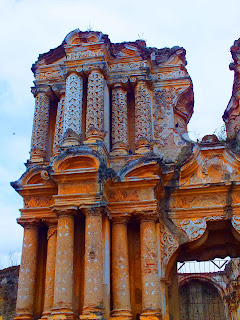 I found this sizable town to be quite attractive and full of
Mayan culture and packed with many things to see and do. Nestled between four volcanoes;
Fuego, Acatenango, Agua with Pacaya not far away. It is located to the north of
Guatemala City at the junction of National Highways 10 and 14, and between
Central American Highway 1 and 9 that happens to come together in Guatemala
City. This town was founded back in 1524. The city of
Antigua, capital of Sacatepéquez Province, Guatemala, is a lovely old colonial
city that for many years was the government, religious and financial hub of
Central America. After being destroyed by a series of earthquakes in 1773, the
city was abandoned in favor of what is now Guatemala City, although not
everyone left. Today, it is one of Guatemala’s top tourist destinations.
I found this sizable town to be quite attractive and full of
Mayan culture and packed with many things to see and do. Nestled between four volcanoes;
Fuego, Acatenango, Agua with Pacaya not far away. It is located to the north of
Guatemala City at the junction of National Highways 10 and 14, and between
Central American Highway 1 and 9 that happens to come together in Guatemala
City. This town was founded back in 1524. The city of
Antigua, capital of Sacatepéquez Province, Guatemala, is a lovely old colonial
city that for many years was the government, religious and financial hub of
Central America. After being destroyed by a series of earthquakes in 1773, the
city was abandoned in favor of what is now Guatemala City, although not
everyone left. Today, it is one of Guatemala’s top tourist destinations.
There are several city guide people that are remarkably
skilled in English to show visitors around all the sites. They run 170 Q for
about two hours. Their information is excellent, and they are passionate about
their town and how it is perceived.
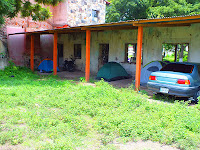 There is free secure parking and overnight camping with cold
showers and bad toilets without any other extras at the “Policia de Turismo”
right in town.
There is free secure parking and overnight camping with cold
showers and bad toilets without any other extras at the “Policia de Turismo”
right in town.
Painted Buses or chicken buses (called that because you just
might find yourself sharing a seat with someone holding a couple of chickens or
some other small livestock) are colorful and quite the experience, a must to ride
and only costing 3 to 5 Q.
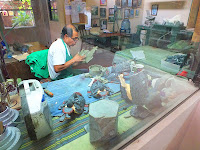
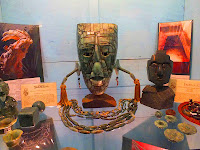
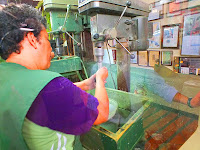
 Jade Maya™, Original Jade Factory and Archaeology
Museum; they are the first and largest jade plant in Central America, since the
Maya. For more information and orders try www.jademaya.com
and/or info@jademaya.com Jade Maya
support information may be obtained at www.themayaconservancy.org.
Jade Maya™, Original Jade Factory and Archaeology
Museum; they are the first and largest jade plant in Central America, since the
Maya. For more information and orders try www.jademaya.com
and/or info@jademaya.com Jade Maya
support information may be obtained at www.themayaconservancy.org.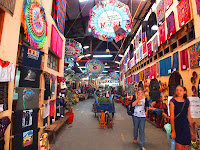
 Mayan Textiles; do not overestimte the importance of the
handmade clothing to the Mayan identity. The food is exceptional, and a must to
try.
Mayan Textiles; do not overestimte the importance of the
handmade clothing to the Mayan identity. The food is exceptional, and a must to
try.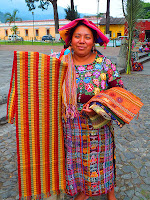
Doors and door knockers, I love the door in a door. So many
doors so many styles. Many are still original and more than 300 to400 years
old.
 If possible plan your to visit around a holiday like Holly
Week that starts on Palm Sunday or the week of All Saints Day, November 1st.
The town explodes with traditional Mayan festivities, costumes, foods, and memorable
events.
If possible plan your to visit around a holiday like Holly
Week that starts on Palm Sunday or the week of All Saints Day, November 1st.
The town explodes with traditional Mayan festivities, costumes, foods, and memorable
events.
As Guatemala City prospered, the people living in the ruins
of Santiago slowly rebuilt their city. People stopped calling it Santiago:
instead, they referred to it as “Antigua Guatemala” or “Old Guatemala City.”
Eventually the “Guatemala” was dropped and people began referring to it as
simply “Antigua.” The city rebuilt slowly, but was still large enough to be
named capital of Sacatepéquez Province when Guatemala became independent from
Spain and (later) the Federation of Central America (1823-1839). Ironically,
“new” Guatemala City would be pummeled by a major earthquake in 1917 and that
Antigua largely escaped damage.
Antigua Today:
Antigua retained its colonial charm and
perfect climate and is today one of Guatemala’s premier tourist
destinations. Visitors enjoy shopping at the
markets, where they can purchase brightly colored textiles, pottery and more.
Many of the old convents and monasteries are still in ruins, but now made safe
for tours. Antigua surrounded by volcanoes: their names are Agua, Fuego,
Acatenango and Pacaya, and visitors like to climb them when it is safe to do
so. The city has been named a UNESCO World Heritage Site.
Sources
And from my personal tour and
impression of the town.









